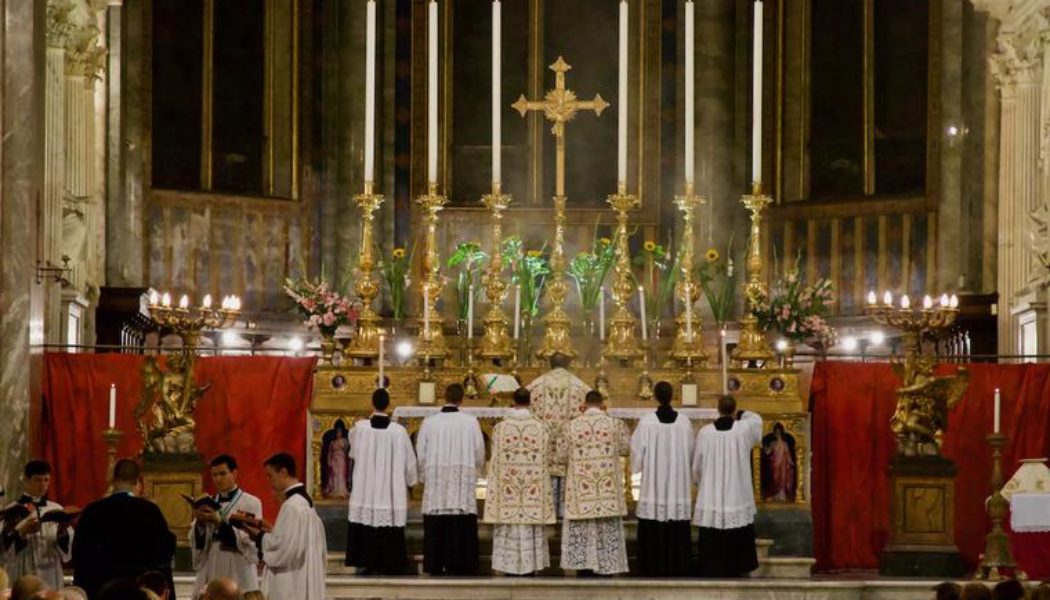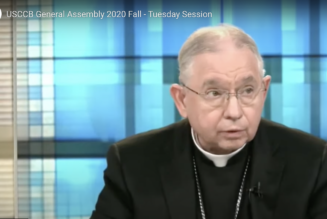
Three years after the promulgation of the motu proprio Traditionis Custodes, imposing severe restrictions on the celebration of the Mass in Latin, controversy over the use of the old Latin Mass is as strong as ever.
Therefore, if Pope Francis’ text was intended to bring some measure of peace to the liturgy wars by increasing liturgical homogenization around the Mass of Paul VI, it has been a failure. The rise of the popularity of the Mass of St. John XXIII (traditional Latin Mass) was caused, at least in part, by a strong sense of dissatisfaction with the Mass of St. Paul VI (or Novus Ordo) among a broad cross section of regular-Mass-attending Catholics. And the move to suppress the Latin Mass has done nothing to change that entrenched reality, especially in light of the fact that the Vatican did nothing at the same time to reform the new liturgy in order to address in a truly pastoral way the legitimate sense of disaffection that many have.
It is rarely a wise pastoral move to try and suppress via raw authority from above the spontaneous expressions of faith — expressions that are thoroughly orthodox and truly “from below” — since such exercises of raw authority absent a true engagement with those affected usually flounder.
The popularity of the traditional Latin Mass can be tied directly to its emphasis upon reverence, transcendence and supernatural verticality. And these are features that should be present in every Mass but are sorely lacking in many parishes. It is instructive that wherever the Mass of Paul VI is celebrated in deeply traditional and transcendent ways it is almost always successful, which only underscores the legitimacy of the desire of millions of devout Catholics for a Mass that is more profoundly reverent.
Therefore, if the aims of Traditiones Custodes were primarily pastoral and not punitive, it is a failure, since it did not in any way address this deep desire for tradition and reverence from so many Catholics. And since it ignored the needs and wishes of the faithful, it created large pockets of open hostility toward the Vatican. This is understandable since the text was promulgated without any pastoral accompaniment with the affected groups or any sense that their liturgical preferences mattered at all on any level.
Labeled as nostalgic “backwardists” and tossed out to the ecclesial peripheries, lovers of the Latin Mass were simply abandoned by this papacy and then vilified. Furthermore, the effective suppression of the older Mass went forward despite strong local support for its continuance from many diocesan bishops, which raises the question of how such an authoritarian move can be squared with all of the rhetoric from Rome about the need for a more synodal Church.
Where is the episcopal collegiality? Where is the much ballyhooed accompaniment? Where is the desire to “smell like the sheep”? And one can hardly see a synodal Church in play here when the Vatican went so far as to tell local parishes what they could and could not publish in their Church bulletins about Mass times for the old Mass. This is centralized Roman authority in the extreme and, therefore, Traditionis Custodes calls into question the sincerity of the entire synodal process.
Pope Francis has repeatedly said that everyone is welcome in the Church (“Todos! Todos!” in Spanish), and he has made this call for radical inclusion in a variety of settings. The implication, of course, is that pastors must be tolerant toward human sin and the foibles of our fallen nature, ever aware of the woundedness of all of us. However, when it comes to those traditional Catholics who have been wounded by a Church insensitive to their needs, and often to the point of open hostility, there is nothing but a slap with the back of the Vatican hand.
There were, and are, problems in some traditionalist parishes with the acceptance of Vatican II, and many traditionalists on social media are often harsh toward the modern Church. Nevertheless, one can clearly detect an increase in such attitudes as a direct response to the theological and pastoral confusions created by this papacy.
A Church that understands this human psychological factor would therefore also understand that the problem of truly radical traditionalism is in many ways a beast of this papacy’s own making. Summorum Pontificum, the motu proprio issued in 2007 by Pope Benedict XVI, in allowing for a broad and free use of the old Mass, sought to build bridges. In contrast, this papacy seems to want to burn that particular bridge while building other bridges to different constituencies.
Along these lines it becomes glaringly obvious that the Vatican now is far more concerned about the problems in traditionalist circles (and the problems are real) than it is with the problems within more progressive Catholic parishes and dioceses. There is an obvious double standard in play. Furthermore, this double standard becomes more problematic when one realizes that the wing of the Church that openly dissents from settled Church teaching in moral matters is far more prevalent and far more influential in the Church than are the small pockets of cranky traditionalists.
Meanwhile, the Germans continue on unabated with their heterodox Synodal Way; Cardinal Jean-Claude Hollerich (who dissents from the Church’s teaching on homosexuality) is put in charge of the synod; Cardinal Robert McElroy is given a red hat despite his public dissent from Church teaching on the same; and Jesuit Father James Martin is given yet more photo ops with the Pope.
I am not claiming that Pope Francis agrees with these folks in all ways, because he clearly doesn’t. But he is also clearly far more sympathetic to them than he is toward those in his flock who seek nothing more than liturgical sacredness and sanity.
There is also a level of mischaracterization of the typical Latin Mass participant that can be detected as the motivation behind Traditionis. My experiences here are purely anecdotal, but most of my Latin Mass-going friends are not radical traditionalists. They are simply devout Catholics seeking a safe space to raise their children away from our pornified cultural septic tank, and they are not in any way deeply concerned with Vatican II and all the debates around it.
They don’t really care about pachamama, Amoris Laetitia, Archbishop Viganò or the Synod on Synodality. In fact, most probably don’t even know what the synod is or what it is for and don’t really care one way or the other. In short, they are not the ideologically driven pitchfork brigade of heresy-hunting reactionaries that the mischaracterizations would have us believe. Furthermore, in a truly synodal Church, it would seem that the few instances where such a radicalized element does exist should be dealt with by the local bishop involved.
In many ways, therefore, Traditionis Custodes represents a solution for a problem that does not exist in any meaningful sense. It is a motu proprio oriented to combating a straw-man caricature of the angry and hostile traditionalists who are supposedly lurking around every corner.
Finally, the promulgation of Traditionis took place after the Vatican received back the results of a questionnaire it had sent out to the bishops. But the results of that survey have never been made public, even with the names of the bishops redacted, which also calls into question the transparency of the entire process. If the problems among traditionalists that Traditionis seeks to address via suppression of the old Mass are widespread and metastasizing further, then one can only assume that this would have been brought up by many bishops in the survey results. And if that is true, then surely the Vatican would want to make those results known in order to give Traditionis a grounding in a more episcopally collegial manner.
Therefore, since the results were never published, the question of just how widespread the problems are in Latin Mass communities is left hanging. Indeed, the silence and lack of transparency give the definite impression that there is something the Vatican is trying to hide.
I myself do not attend the traditional Latin Mass and I have no particular attachment to it. Nevertheless, there are millions of devout and deeply sane Catholics who do love it. I see no reason why a pastoral Church that seeks out the peripheries would want to alienate them and push them away. Thus, I think Summorum Pontificum was pastorally sensitive and wise. And I think Traditionis Custodes is pastorally insensitive and unwise, now and when it was first published three years ago.









